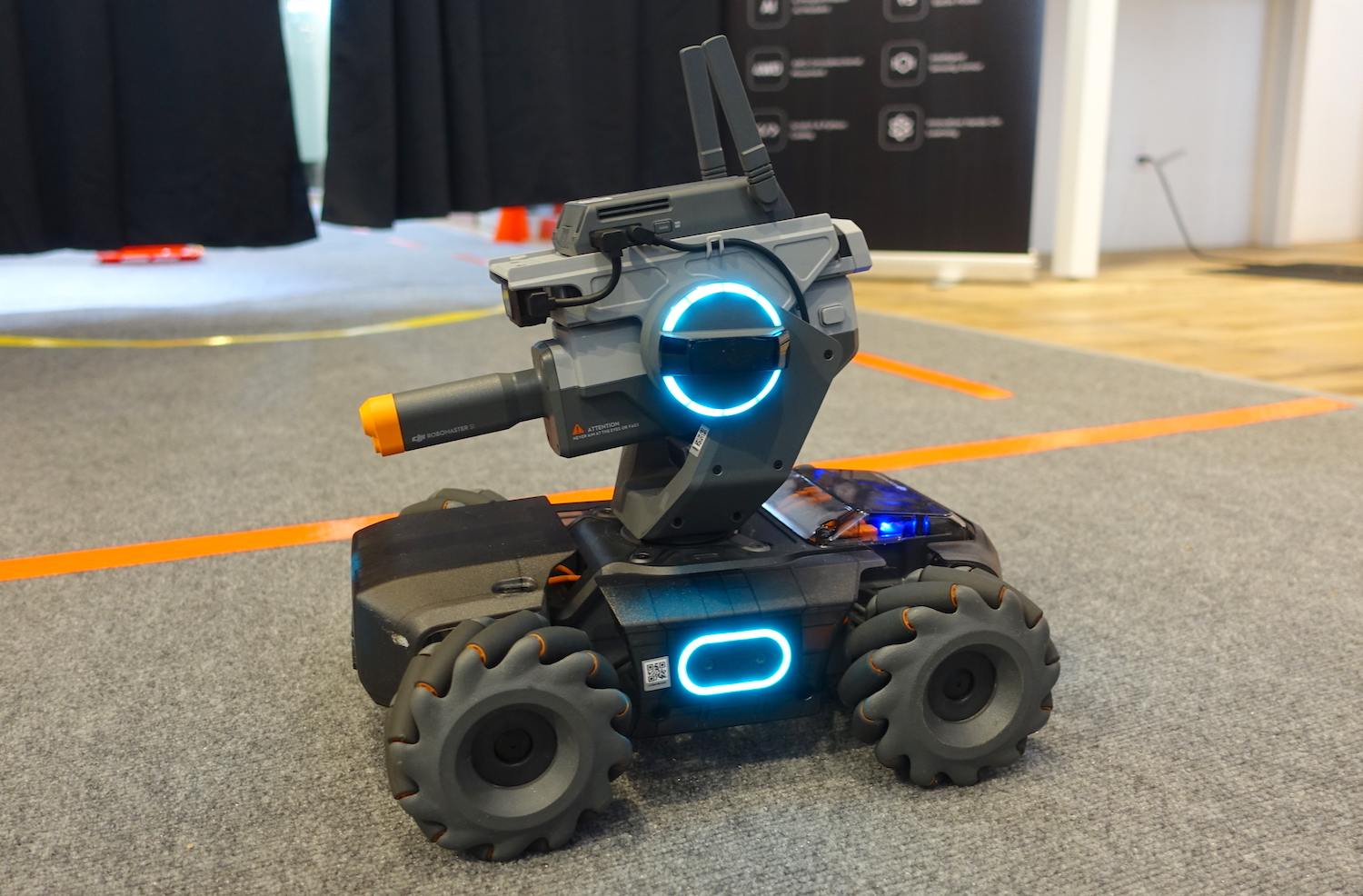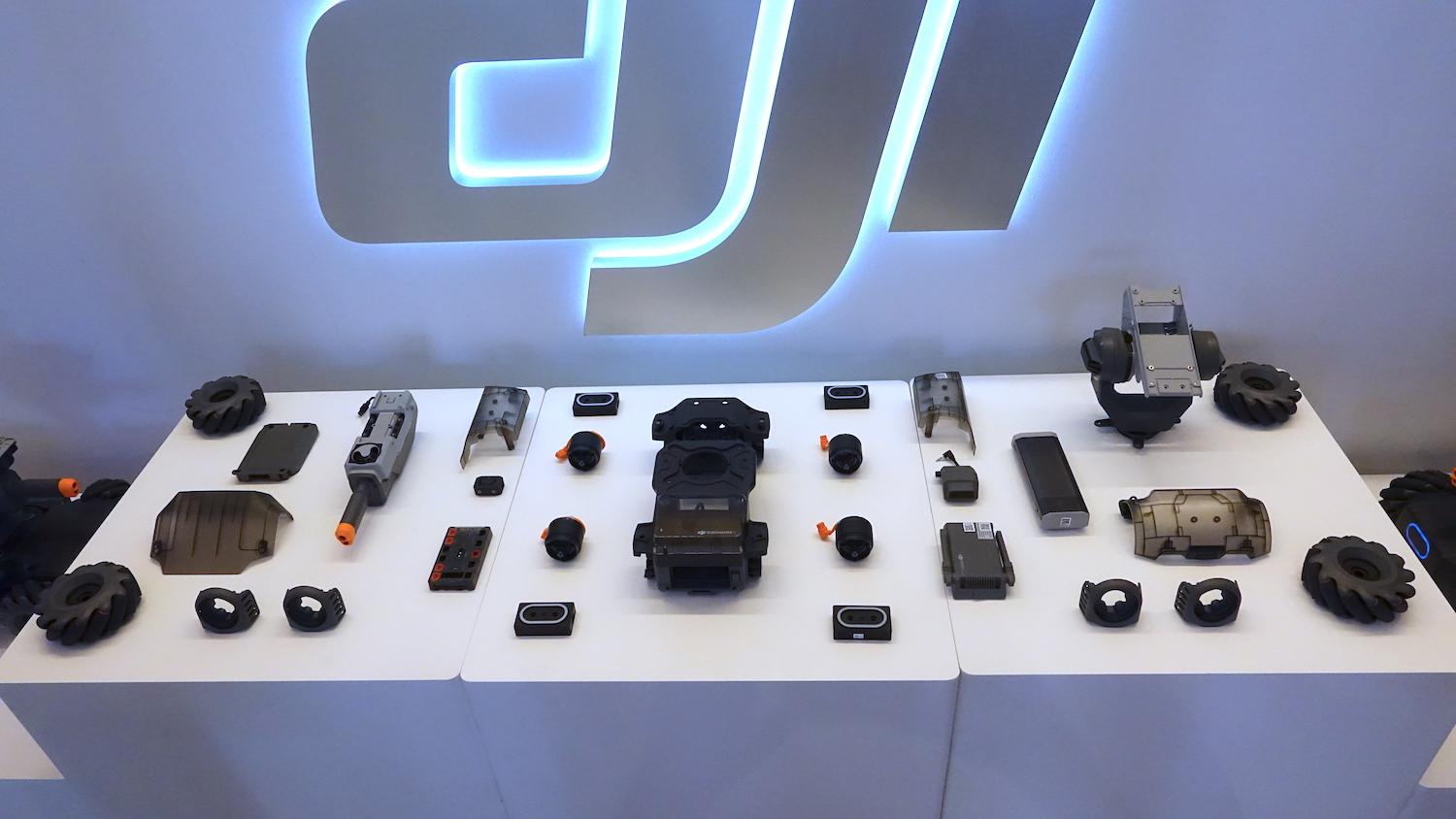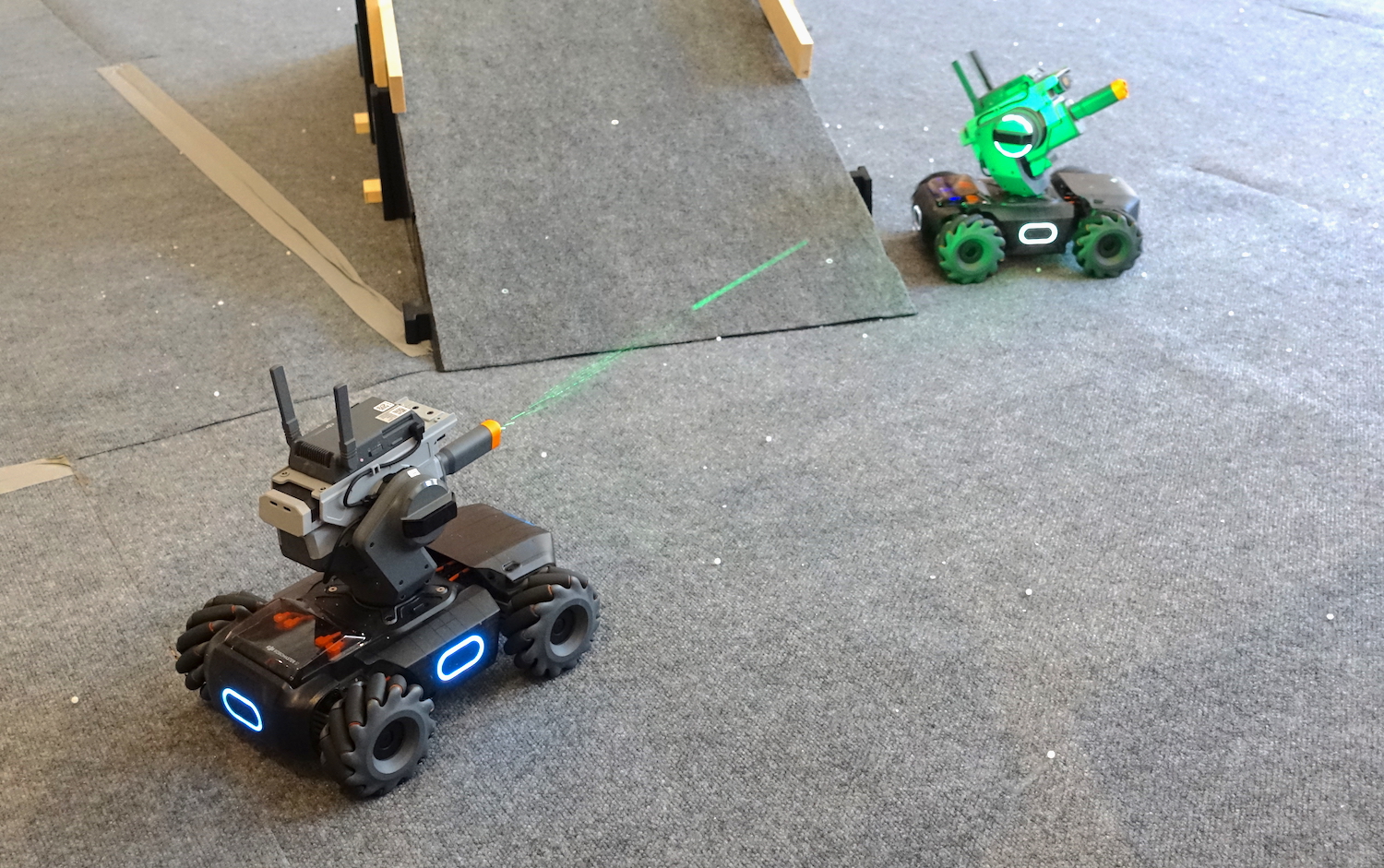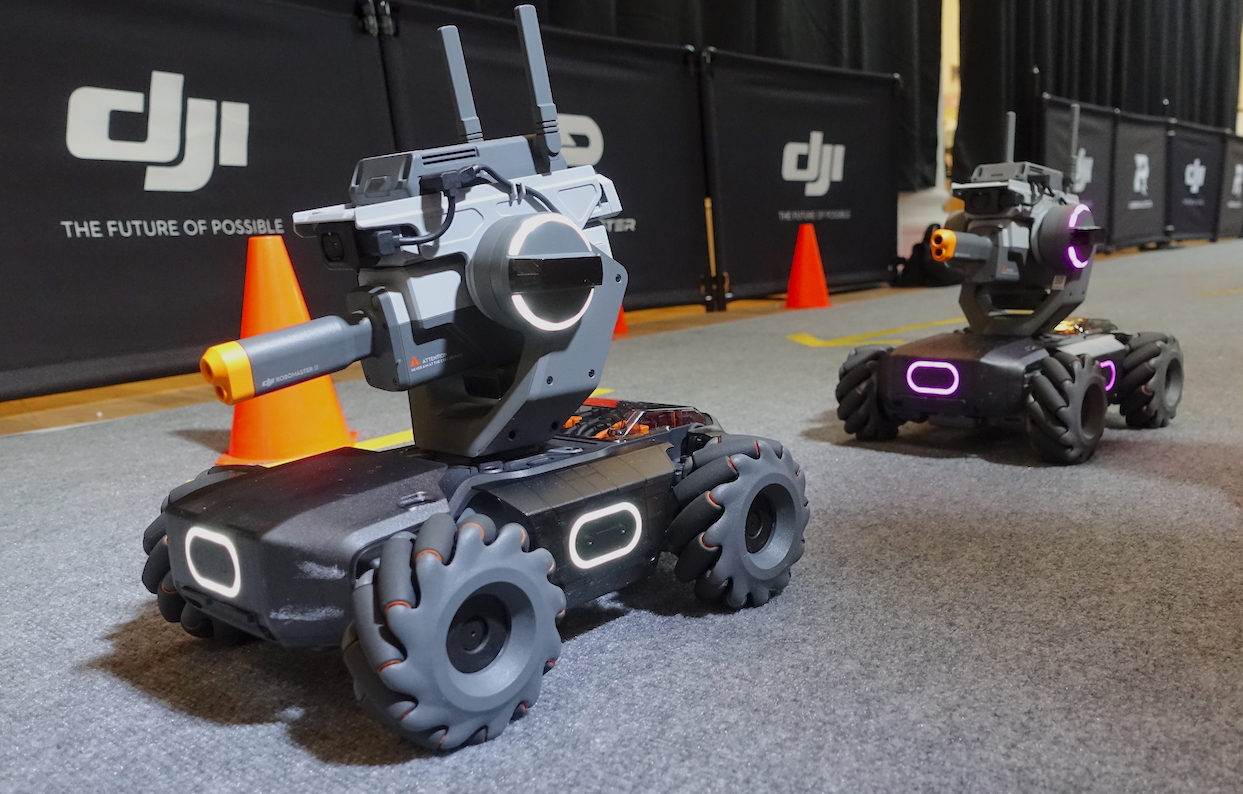DJI Robomaster S1 Hands-On: This Pricey Drone Teaches Kids to Code
The Robomaster S1 can be programmed by kids, shoot pellets, and battle against other drones, but it's pricey.

DJI’s newest drone doesn’t fly, but the company hopes that the programmable Robomaster S1 will help kids’ imaginations soar. The four-wheeled S1, which comes with a bevy of sensors as well as a cannon that shoots little plastic pellets, can be controlled via an app and programmed with either Python or Scratch. We had a chance to try out this zippy machine, which goes on sale June 12 for a sky-high price of $500.
Each Robomaster S1 comes disassembled in more than two dozen pieces; the first step for any child is to put everything together. The pieces all feel pretty sturdy, though it looks like you’ll need a steady set of hands, a small screwdriver, and a couple hours of free time to put everything together.

The completed Robomaster S1 is about the size of a large shoebox. A swiveling turret on top can either fire blasts of infrared light, or tiny gel pellets, which are sure to get in every corner of your house. You get 10,000 pellets with the S1, whose hopper can hold 450. Prior to loading, you have to soak the pellets in water until they puff up to the size of a small pea. They don’t hurt when they hit you, but DJI gives you a pair of safety goggles for a reason. Please don’t use the Robomaster to antagonize your pets.

The S1 is studded with 31 sensors (such as infrared and impact sensors) that help the drone navigate and interact with other objects. For example, you can program the drone to follow a painted line, and to stop, go, or turn when it sees other specific symbols.
Each of the four wheels is powered by a 100-Watt brushless motor, and while its speed tops out at 8 miles per hour, the S1 felt plenty zippy as I drove it around DJI’s offices. Because the wheels are independently powered — and each wheel has 12 rollers — the drone’s very maneuverable, too. I could send the S1 careering in any direction instantly, often to the detriment of whatever happened to be in its way.

Control of the S1 is handled by DJI’s app, or through an optional physical control pad that clips to your smartphone. The main view on the app’s screen is a live feed from the S1’s 1080p camera. The S1 can also recognize and follow people (though not with its pellet cannon active, unfortunately), and can also respond to claps and gesture controls, similar to DJI’s flying drones such as the Mavic Air.
If you have more than one S1 — which seems unlikely, given the drone’s cost — you can battle them against each other using either the infrared cannon or the pellets. (The S1’s impact sensors can register a hit). We tried both combat modes, and it was much harder to hit one of these things with the pellets than with the infared.

When you’re not blasting away with the S1, you can program it using either Python or Scratch, the latter of which is fairly easy for kids to pick up. You simply drag and drop tiles into place to tell the drone what you want it to do.
Get instant access to breaking news, the hottest reviews, great deals and helpful tips.
The S1’s battery should last for up to 30 minutes, a few minutes longer than DJI’s Mavic 2 Pro drone. Like its flying drones, you can swap out the S1’s battery.

After spending a few minutes driving the Robomaster S1 around and shooting its cannon at various things, I’m curious to try coding for it and exploring all that you can do. However, $500 is a lot to pay for what is essentially a kids’ toy. Less expensive alternatives for teaching kids to program include the Sphero SPRK ($100), Ryze Tello ($99) and the Parrot Mambo ($179), the latter of which also has a little cannon attachment.
The Robomaster S1 is available now for $499, while a PlayMore Kit — which will include the controller, additional gel beads, one battery, and a gel bead container — will be available at a later date at a yet-to-be-announced price.
Stay tuned for our full review.
Photo credit: Tom's Guide

Michael A. Prospero is the U.S. Editor-in-Chief for Tom’s Guide. He oversees all evergreen content and oversees the Homes, Smart Home, and Fitness/Wearables categories for the site. In his spare time, he also tests out the latest drones, electric scooters, and smart home gadgets, such as video doorbells. Before his tenure at Tom's Guide, he was the Reviews Editor for Laptop Magazine, a reporter at Fast Company, the Times of Trenton, and, many eons back, an intern at George magazine. He received his undergraduate degree from Boston College, where he worked on the campus newspaper The Heights, and then attended the Columbia University school of Journalism. When he’s not testing out the latest running watch, electric scooter, or skiing or training for a marathon, he’s probably using the latest sous vide machine, smoker, or pizza oven, to the delight — or chagrin — of his family.
